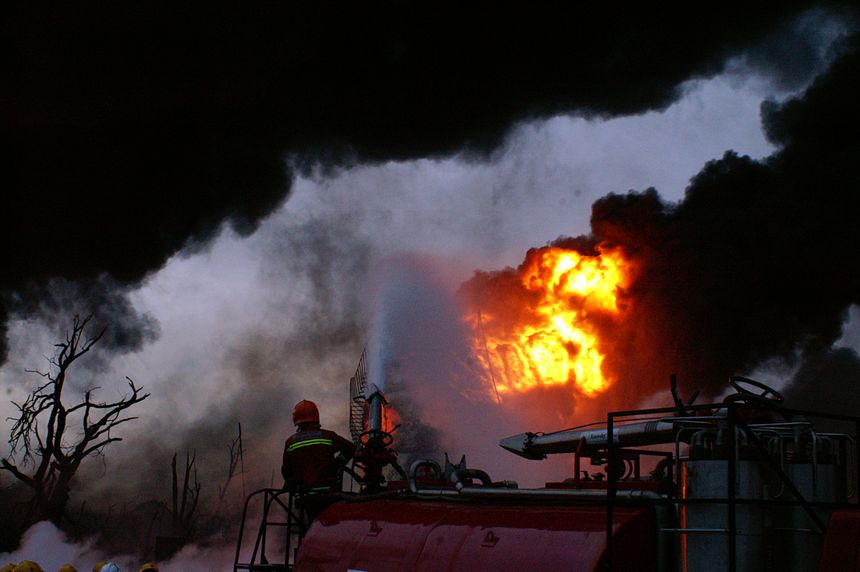In Avedian v. Enbridge Gas Distribution Inc., 2025 ONSC 5700, the Ontario Superior Court of Justice dismissed a $16 million claim for alleged consequential economic losses arising from a 2010 gas explosion and fire in an apartment building laundry room. The plaintiffs failed to prove the economic losses were reasonably foreseeable and would not have occurred but for the explosion and fire. The decision reaffirms the burden on plaintiffs to establish causation for economic losses, even where liability has been admitted.
The Decision
The plaintiffs were three investors who owned the building through a corporation. Within weeks of purchasing the building, a gas explosion in the ground-floor laundry room caused localized damage to several units and common areas. Intact Insurance Company paid approximately $300,000 for repairs and settled its subrogated claim with the defendants for $162,457.81. This amount was paid to the plaintiffs to cover short-term business interruption losses. However, the plaintiffs claimed their consequential economic losses from the fire were over $16 million. They alleged the damage from the fire caused ongoing vacancies, lost rent, inability to charge for parking and storage, added staffing costs, management fees, increased insurance costs, a lost opportunity to build 17 new units, and ultimately a $10 million reduction in the property's value when it was sold in 2015.
The action was dismissed because the plaintiffs failed to establish a “substantial connection” between the physical damage caused by the fire and the alleged consequential losses. The plaintiffs relied on evidence from the building’s management company, which was owned by one of the plaintiffs. The court found this evidence to be self-serving, unreliable, and largely hearsay, unsupported by documentation. There was also insufficient evidence produced of tenant complaints, elevator logs, rent rolls, or correspondence with the insurer. Further, although the building repairs were completed less than a year after the fire, they were delayed due to requests for upgrades from the plaintiff and miscommunication. The court noted the plaintiffs had a duty to mitigate their losses by working promptly with the insurer to get the repairs completed as soon as possible. The court also concluded that any diminution in value must be assessed shortly after repairs were completed in 2011, not at the time of sale in 2015.
Proving a “Substantial Connection”
To recover consequential economic losses, which are hypothetical losses, the plaintiff must prove a “substantial connection” between the physical damage and a hypothetical economic loss. To prove a substantial connection, the plaintiff must establish the following four criteria:
(1) Prove on the balance of probabilities that but for the defendant’s wrongful conduct, the plaintiff had a chance to obtain a benefit or avoid a loss;
(2) Show that the lost chance was sufficiently real and significant to rise above mere speculation or “some reasonable probability”;
(3) Demonstrate the loss depended on something other than the plaintiff’s actions; and
(4) Show the lost chance had practical value.
Applying these factors, court concluded there was no substantial connection and the damages were too remote. Further, there was evidence of other causes for the plaintiffs’ economic losses.
No Double Recovery
This decision also addresses the issue of deducting insurance payments from a damages award. Here, the plaintiffs sought double recovery for economic losses already compensated by their insurer. They relied on the private insurance exception which states that benefits received by a plaintiff through private insurance are not deductible from damages. However, the court affirmed that the private insurance exception does not apply when a subrogated claim has been made. The doctrine of subrogation ensures the insured receives a just indemnity and does not profit from insurance.
Key Takeaways
Even if negligence is admitted, to recover consequential economic losses, plaintiffs must demonstrate a substantial connection between the physical damage and the economic loss claimed. Losses that are speculative, unsupported, or influenced by unrelated factors will be considered too remote and unrecoverable. Causation for economic loss must be established with clear, credible, and objective evidence.
Where an insurer has paid out the insured and exercised subrogation rights, the insured cannot claim the same losses again. The court’s decision reinforces that insurance coverage is meant to restore, not enrich, the insured.





/Passle/593009bf3d94760454b5e183/SearchServiceImages/2025-07-04-19-54-57-855-686831918714336e9f5574a9.jpg)
/Passle/593009bf3d94760454b5e183/SearchServiceImages/2025-12-12-18-51-33-608-693c6435f367c9b87b3c7bb8.jpg)
/Passle/593009bf3d94760454b5e183/SearchServiceImages/2025-12-09-15-57-40-245-693846f42b43241fe162dc2b.jpg)
/Passle/593009bf3d94760454b5e183/MediaLibrary/Images/2025-12-05-18-27-58-553-6933242ec95179a7733e720d.jpg)